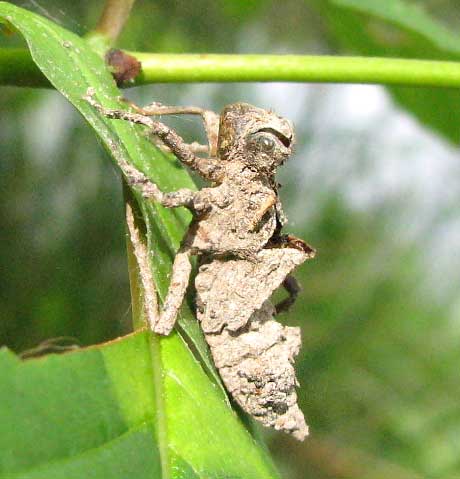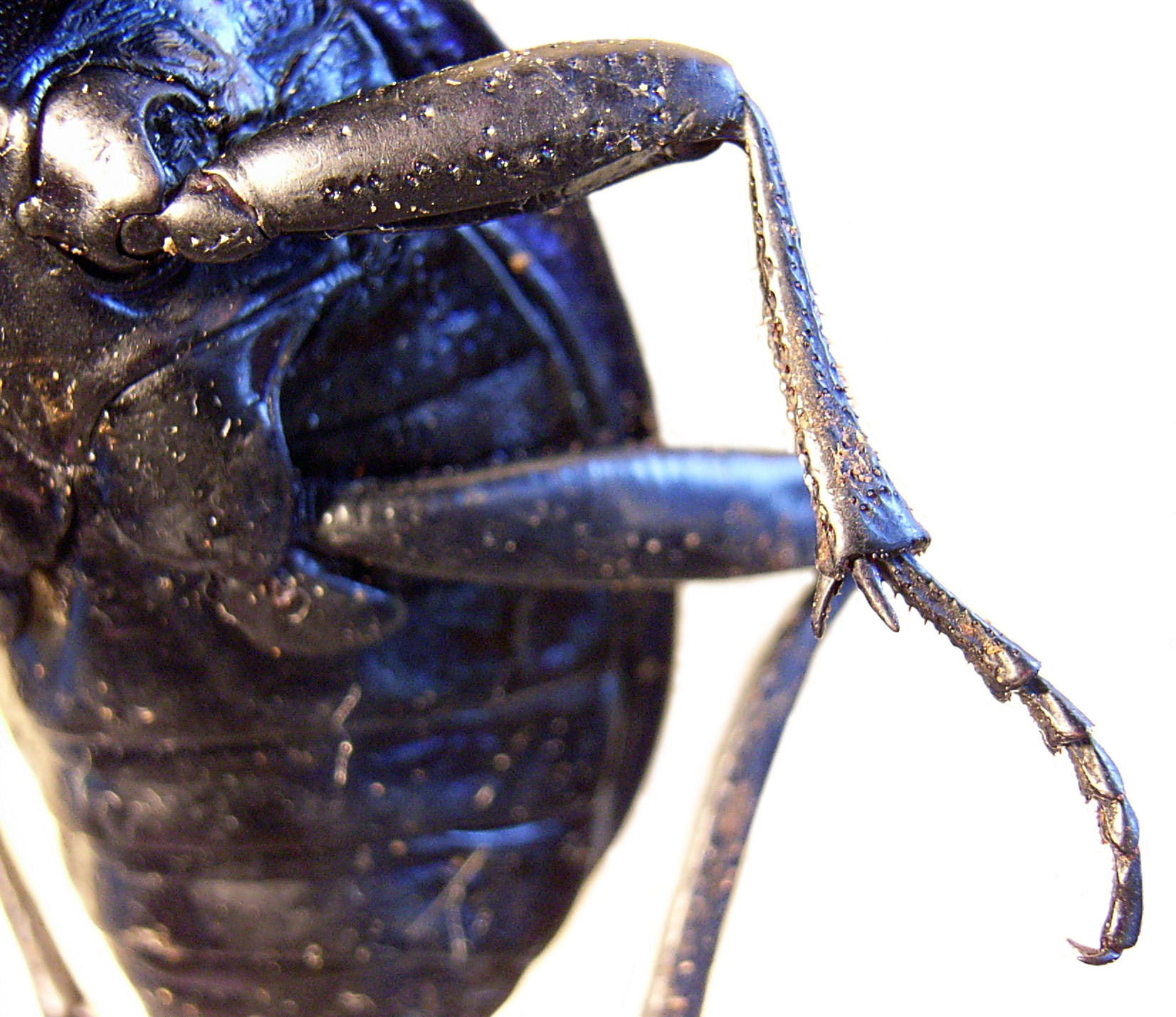|
Isopods
Isopoda is an Order (biology), order of crustaceans. Members of this group are called isopods and include both Aquatic animal, aquatic species and Terrestrial animal, terrestrial species such as woodlice. All have rigid, segmented exoskeletons, two pairs of Antenna (biology), antennae, seven pairs of jointed limbs on the Thorax#In_arthropods, thorax, and five pairs of branching appendages on the Abdomen#In other animals, abdomen that are used in Respiration (physiology), respiration. Females brood their young in a pouch under their thorax called the Brood pouch (Peracarida), marsupium. Isopods have various feeding methods: some eat dead or decaying plant and animal matter, others are Grazing (behaviour), grazers or filter feeders, a few are Predation, predators, and some are internal or external parasites, mostly of fish. Aquatic species mostly live on the seabed or the bottom of freshwater body of water, bodies of water, but some Taxon, taxa can swim for short distance. Terre ... [...More Info...] [...Related Items...] OR: [Wikipedia] [Google] [Baidu] |
Woodlice
Woodlice are terrestrial isopods in the suborder Oniscidea. Their name is derived from being often found in old wood, and from louse, a parasitic insect, although woodlice are neither parasitic nor insects. Woodlice evolved from marine isopods which are presumed to have colonised land in the Carboniferous, though the oldest known fossils are from the Cretaceous period. This makes them quite unique among the crustaceans, being one of the few lineages to have transitioned into a fully terrestrial environment. Woodlice have many common names and although often referred to as terrestrial isopods, some species live semiterrestrially or have recolonised aquatic environments like those of the genus ''Ligia''. Woodlice in the families Armadillidae, Armadillidiidae, Eubelidae, Tylidae and some other genera can roll up into a roughly spherical shape (:wiktionary:conglobate, conglobate) as a defensive mechanism or to conserve moisture; others have partial rolling ability, but most cannot ... [...More Info...] [...Related Items...] OR: [Wikipedia] [Google] [Baidu] |
Asellota
Asellota is a suborder of isopod crustaceans found in marine and freshwater environments. Roughly one-quarter of all marine isopods belong to this suborder. Members of this suborder are readily distinguished from other isopods by their complex copulatory apparatus. Other characteristics include six-jointed antennal peduncle, the styliform uropods (a character shared with some other isopod groups), the fusion of pleonites 5, 4 and sometimes 3 to the pleotelson, and absence of the first pleopod in females. Classification The suborder Asellota comprises these families: Some classifications also include the Microcerberidea within Asellota. Janiroidea Sars, 1897 * Acanthaspidiidae Menzies, 1962 * Dendrotiidae Vanhöffen, 1914 * Desmosomatidae Sars, 1899 * Echinothambematidae Menzies, 1956 * Haplomunnidae Wilson, 1976 * Haploniscidae Hansen, 1916 * Ischnomesidae Hansen, 1916 * Janirellidae Menzies, 1956 * Janiridae Sars, 1897 * Joeropsis Koehler, 1885http://www.marinespecies.org/aph ... [...More Info...] [...Related Items...] OR: [Wikipedia] [Google] [Baidu] |
Parasite
Parasitism is a Symbiosis, close relationship between species, where one organism, the parasite, lives (at least some of the time) on or inside another organism, the Host (biology), host, causing it some harm, and is Adaptation, adapted structurally to this way of life. The entomologist E. O. Wilson characterised parasites' way of feeding as "predators that eat prey in units of less than one". Parasites include single-celled protozoans such as the agents of malaria, sleeping sickness, and amoebic dysentery; animals such as hookworms, lice, mosquitoes, and vampire bats; fungi such as Armillaria mellea, honey fungus and the agents of ringworm; and plants such as mistletoe, dodder, and the Orobanchaceae, broomrapes. There are six major parasitic Behavioral ecology#Evolutionarily stable strategy, strategies of exploitation of animal hosts, namely parasitic castration, directly transmitted parasitism (by contact), wikt:trophic, trophicallytransmitted parasitism (by being eaten), ... [...More Info...] [...Related Items...] OR: [Wikipedia] [Google] [Baidu] |
Phreatoicidea
Phreatoicidea is a suborder of isopod crustaceans. Extant species are confined to freshwater environments in South Africa, India, and Oceania. This seemingly Gondwana-derived distribution belies the fact that the group once had a cosmopolitan distribution; fossils which can be assigned to the Phreatoicidea are the oldest isopod fossils, and are found throughout the world. In the intervening 325 million years, phreatoicideans have changed little, and are thus considered living fossils. The first Australian phreatoicidean was described by Charles Chilton in 1891. Two families are represented in Australia: Amphisopodidae in the interior of Australia, and in the west, and Phreatoicidae in New South Wales, Victoria and Tasmania Tasmania (; palawa kani: ''Lutruwita'') is an island States and territories of Australia, state of Australia. It is located to the south of the Mainland Australia, Australian mainland, and is separated from it by the Bass Strait. The sta .... F ... [...More Info...] [...Related Items...] OR: [Wikipedia] [Google] [Baidu] |
Exoskeleton
An exoskeleton () . is a skeleton that is on the exterior of an animal in the form of hardened integument, which both supports the body's shape and protects the internal organs, in contrast to an internal endoskeleton (e.g. human skeleton, that of a human) which is enclosed underneath other soft tissues. Some large, hard and non-flexible protective exoskeletons are known as mollusc shell, shell or armour (anatomy), armour. Examples of exoskeletons in animals include the arthropod exoskeleton, cuticle skeletons shared by arthropods (insects, chelicerates, myriapods and crustaceans) and tardigrades, as well as the corallite, skeletal cups formed by hardened secretion of stony corals, the test (biology), test/tunic of sea squirts and sea urchins, and the prominent mollusc shell shared by snails, bivalvia, clams, tusk shells, chitons and nautilus. Some vertebrate animals, such as the turtle, have both an endoskeleton and a turtle shell, protective exoskeleton. Role Exoskeletons c ... [...More Info...] [...Related Items...] OR: [Wikipedia] [Google] [Baidu] |
Antenna (biology)
An antenna (plural: antennae) is one of a pair of appendages used for Sensory system, sensing in arthropods. Antennae are sometimes referred to as ''feelers''. Antennae are connected to the first one or two Segmentation (biology), segments of the arthropod head. They vary widely in form but are always made of one or more jointed segments. While they are typically sensory organs, the exact nature of what they sense and how they sense it is not the same in all groups. Functions may variously include sensing tactition, touch, air motion, heat, vibration (sound), and especially insect olfaction, smell or gustation, taste. Antennae are sometimes modified for other purposes, such as mating, brooding, swimming, and even anchoring the arthropod to a substrate (biology), substrate. Larval arthropods have antennae that differ from those of the adult. Many crustaceans, for example, have free-swimming larvae that use their antennae for swimming. Antennae can also locate other group members i ... [...More Info...] [...Related Items...] OR: [Wikipedia] [Google] [Baidu] |
Thorax
The thorax (: thoraces or thoraxes) or chest is a part of the anatomy of mammals and other tetrapod animals located between the neck and the abdomen. In insects, crustaceans, and the extinct trilobites, the thorax is one of the three main divisions of the body, each in turn composed of multiple segments. The human thorax includes the thoracic cavity and the thoracic wall. It contains organs including the heart, lungs, and thymus gland, as well as muscles and various other internal structures. The chest may be affected by many diseases, of which the most common symptom is chest pain. Etymology The word thorax comes from the Greek θώραξ ''thṓrax'' " breastplate, cuirass, corslet" via . Humans Structure In humans and other hominids, the thorax is the chest region of the body between the neck and the abdomen, along with its internal organs and other contents. It is mostly protected and supported by the rib cage, spine, and shoulder girdle. Contents The ... [...More Info...] [...Related Items...] OR: [Wikipedia] [Google] [Baidu] |
Appendage
An appendage (or outgrowth) is an external body part or natural prolongation that protrudes from an organism's body such as an arm or a leg. Protrusions from single-celled bacteria and archaea are known as cell-surface appendages or surface appendages. In many kinds of eukaryotic cells, the protrusions are known as membrane protrusions or cell appendages (examples include microvilli and cilia). Types in animals In arthropods, an appendage refers to any of the homologous body parts that may extend from a body segment, including antennae, mouthparts (including mandibles, maxillae and maxillipeds), gills, locomotor legs ( pereiopods for walking, and pleopods for swimming), sexual organs ( gonopods), and parts of the tail (uropods). Typically, each body segment carries one pair of appendages. An appendage which is modified to assist in feeding is known as a maxilliped or gnathopod. In annelids lateral protrusions from the body are called parapodia. In echinoderms ... [...More Info...] [...Related Items...] OR: [Wikipedia] [Google] [Baidu] |
Carboniferous
The Carboniferous ( ) is a Geologic time scale, geologic period and System (stratigraphy), system of the Paleozoic era (geology), era that spans 60 million years, from the end of the Devonian Period Ma (million years ago) to the beginning of the Permian Period, Ma. It is the fifth and penultimate period of the Paleozoic era and the fifth period of the Phanerozoic eon (geology), eon. In North America, the Carboniferous is often treated as two separate geological periods, the earlier Mississippian (geology), Mississippian and the later Pennsylvanian (geology), Pennsylvanian. The name ''Carboniferous'' means "coal-bearing", from the Latin ("coal") and ("bear, carry"), and refers to the many coal beds formed globally during that time. The first of the modern "system" names, it was coined by geologists William Conybeare (geologist), William Conybeare and William Phillips (geologist), William Phillips in 1822, based on a study of the British rock succession. Carboniferous is the per ... [...More Info...] [...Related Items...] OR: [Wikipedia] [Google] [Baidu] |
Abdomen
The abdomen (colloquially called the gut, belly, tummy, midriff, tucky, or stomach) is the front part of the torso between the thorax (chest) and pelvis in humans and in other vertebrates. The area occupied by the abdomen is called the abdominal cavity. In arthropods, it is the posterior (anatomy), posterior tagma (biology), tagma of the body; it follows the thorax or cephalothorax. In humans, the abdomen stretches from the thorax at the thoracic diaphragm to the pelvis at the pelvic brim. The pelvic brim stretches from the lumbosacral joint (the intervertebral disc between Lumbar vertebrae, L5 and Vertebra#Sacrum, S1) to the pubic symphysis and is the edge of the pelvic inlet. The space above this inlet and under the thoracic diaphragm is termed the abdominal cavity. The boundary of the abdominal cavity is the abdominal wall in the front and the peritoneal surface at the rear. In vertebrates, the abdomen is a large body cavity enclosed by the abdominal muscles, at the front an ... [...More Info...] [...Related Items...] OR: [Wikipedia] [Google] [Baidu] |
Terrestrial Animal
Terrestrial animals are animals that live predominantly or entirely on land (e.g. cats, chickens, ants, most spiders), as compared with aquatic animals, which live predominantly or entirely in the water (e.g. fish, lobsters, octopuses), and semiaquatic animals, which rely on both aquatic and terrestrial habitats (e.g. platypus, most amphibians). Some groups of insects are terrestrial, such as ants, butterflies, earwigs, cockroaches, grasshoppers and many others, while other groups are partially aquatic, such as mosquitoes and dragonflies, which pass their larval stages in water. Alternatively, terrestrial is used to describe animals that live on the ground, as opposed to arboreal animals that live in trees. Ecological subgroups The term "terrestrial" is typically applied to species that live primarily on or in the ground, in contrast to arboreal species, who live primarily in trees, even though the latter are actually a specialized subgroup of the terre ... [...More Info...] [...Related Items...] OR: [Wikipedia] [Google] [Baidu] |






